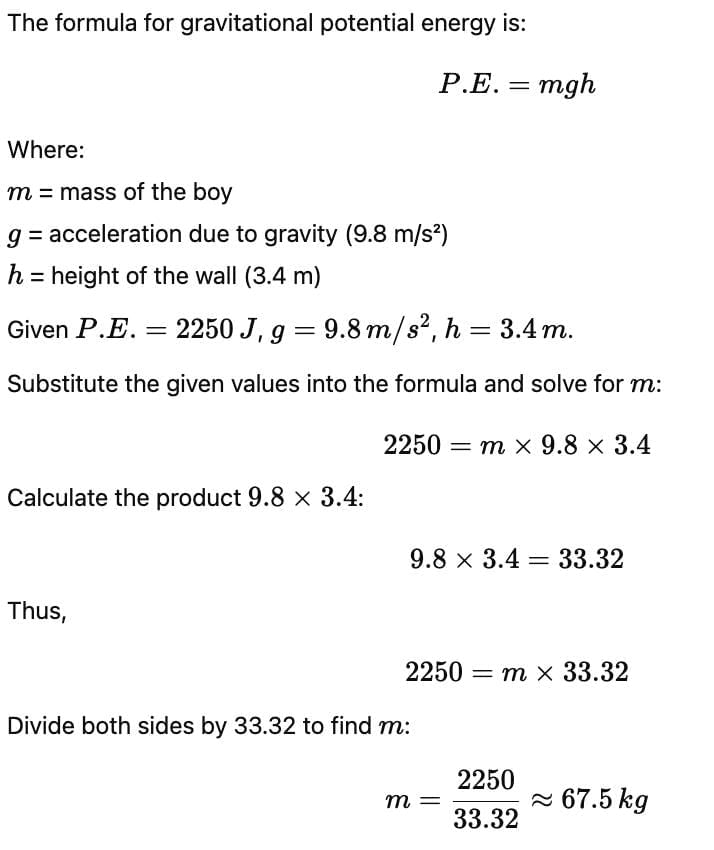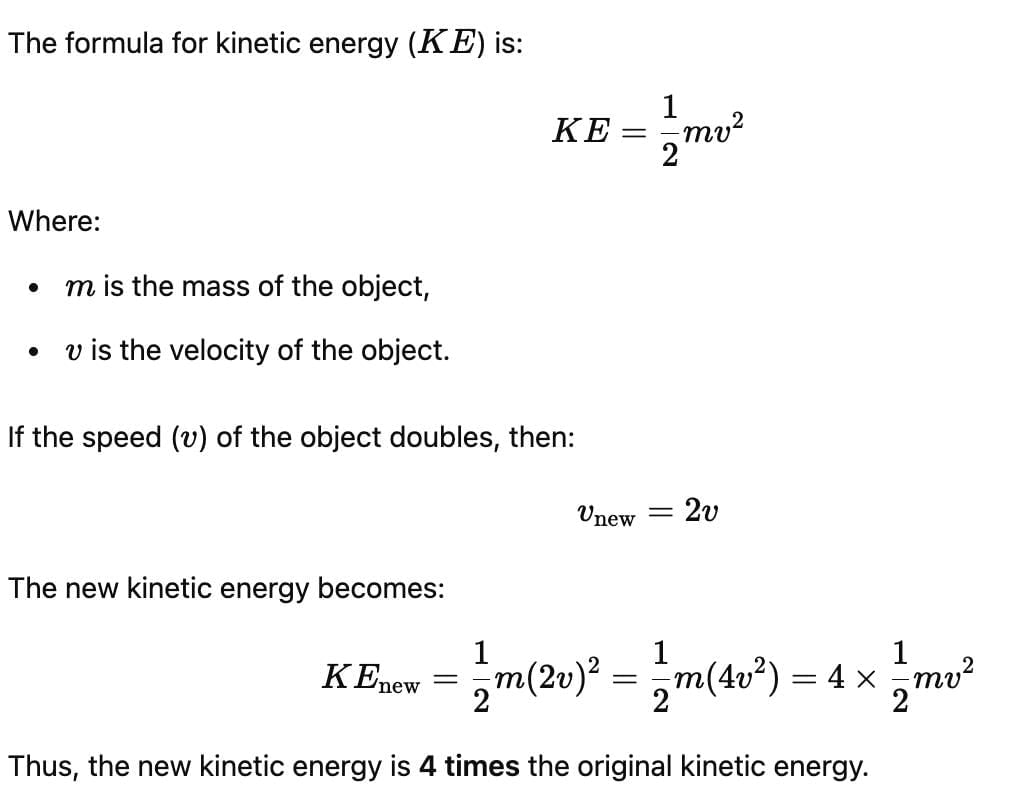Lakhmir Singh & Manjit Kaur Test: Work & Energy - Class 9 MCQ
20 Questions MCQ Test Science Class 9 - Lakhmir Singh & Manjit Kaur Test: Work & Energy
A body is acted upon by a force 25 N acquires of 5ms-2 and covers a distance in 2sec. If the body starts from rest, the Kinetic energy acquired by it is?
A freely falling body during its fall will have
A boy climbs on to a wall that is 3.4 m high and gains 2250 J of potential energy. What is the mass of the boy (approx)? Take g = 9.8 m/Sec2
A body of mass 4 kg has a momentum of 25 kg m/s, its K.E. is:
What happens to K.E. of a body when 3/4 th of mass is removed and its velocity is doubled?
Elastic potential energy of a body can be achieved by
If the velocity of a moving car is halved, its kinetic energy would
A fish with weight 35 kg dives and hits the ground (zero height) with kinetic energy equal to 3500J. Find the height through which fish dived. Take g = 10 m/s2
Which of the following is not an example of potential energy?
How fast should a person with mass 50kg walk so that his kinetic energy is 625 J ?
The kinetic energy of a body changes from 12 J to 60 J due to the action of a force of 5N on an object of mass 4 kg. The work done by the force is:
Two bodies of masses m and 4 m are moving with equal kinetic energy. The ratio of velocities with which they are traveling is :
If the speed of an object doubles, its kinetic energy becomes
If two bodies of different masses have the same K.E. then the relation between momentum and mass will be:
1 J is the energy required to do ____ of work.
A body of mass 44 kg is moving at a velocity of 10 m/s is brought to rest in 10mins, the work done is:
For an object to have gravitational potential energy only, it must be
Potential energy is energy possessed by an object due to its
Which of the following produces energy because of temperature difference at various levels in ocean.
|
88 videos|369 docs|67 tests
|




















